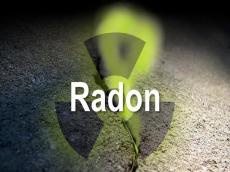Today.Az » Society » Level of "deadly gas" increased in some regions
23 November 2017 [14:50] - Today.Az

By Azernews
By Aygul Salmanova Some of Azerbaijan’s mountainous regions, popular beauty spots of the country, turn out to have high concentrations of radon - a naturally occurring radioactive gas produced by the decay of uranium 238, the second leading cause of lung cancer. The Institute of Geology and Geophysics of the National Academy of Sciences of Azerbaijan (ANAS) told Trend that number of settlements in the mountainous regions of Azerbaijan recorded radon in the air, exceeding the permissible norm. The institute noted that radon is widely distributed on the planet, but its high content in the air leads to lung cancer. Among the causes of lung cancer, radon is second only to cigarettes. In the world today, radiation levels are measured to ensure safe life of people. As for Azerbaijan, radiation exposure rates are monitored by the Radiation Problems Institute. Studies on the distribution of radon in the country were started in 2010 with the participation of foreign scientists. As a result of the research conducted with the financial support of the National Science Foundation of Switzerland and with the help of the Institute of Geology and Geophysics of ANAS, a ‘Map of the distribution of volumetric activity of radon in the territory of Azerbaijan’ was compiled. Currently, the research continues, and within the framework of the ‘Radon Safety Research Program and measures aimed at radiation decrease in the Azerbaijan Republic for 2014-2018’, the public will be informed about the ways to combat this natural gas. One of the main channels of radon penetration to the earth's surface is tectonic cracks. And the fact that Azerbaijan is considered a seismically active region creates concerns, since gas emerging from such cracks, as a rule, accumulates in the basement and lower floors of buildings. Natural radiation areas in Azerbaijan are the Greater Caucasus Range and Kur-Araz plain. The levels of natural radiation in the Oghuz, Gabala, Shamakhi, Ismayilli, Zagatala and Balakan regions are 12-20 mr/hr. Despite this there is no radiation hazard in the country, noted earlier Matanat Avazova, Deputy Director of the National Environmental Monitoring Department at the Ecology Ministry. “We have automatic stations for measuring radiation in Azerbaijan. These stations are mainly located in border areas. These stations have been operating for many years. During this time, no emergency situation has been registered in the country. Radiation conditions are stable in the country, because there is no radiation source in Azerbaijan,” she said. As a rule, radon is detected on the lands where oil was extracted. And Absheron has almost 60 percent of such lands. For Absheron this background level is 6-8, 8-10 mr/hr. Speaking about radioactive radon gas in the oil fields in Azerbaijan, Avazova said that this radioactive element has no danger to human life in open air.
“Such radiating elements are not dangerous in the open air, and can be dangerous only in indoor conditions,” she said. Exposure rates of up to 30-50 micro-roentgen per hour are considered normal. But the large dosages can have dramatic effects.
|